The Antiplanner wishes everyone a happy holiday. This year the Antiplanner is thankful for having had the company of Chip the Wonder Dog for more than 17 years.
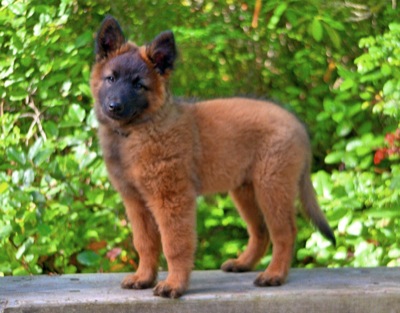
The photos of Chip that I’ve previously posted here were mostly taken in the digital age. I recently spent a couple of days scanning many of the photos taken during the film era. If you want to see more unbearably cute puppy photos, click on through, and click on any photo for a larger view. We’ll leave political discussions to other posts.
Fifth Pick of the Litter
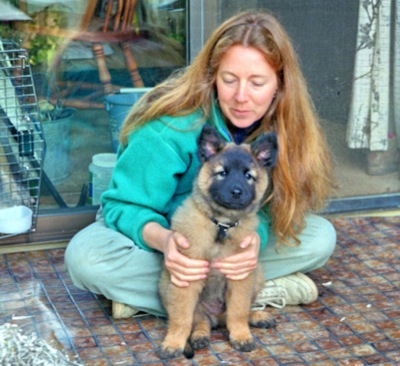
Chip and his brother Cruz arrived from Alaska at the Portland Airport on August 27, 1993.
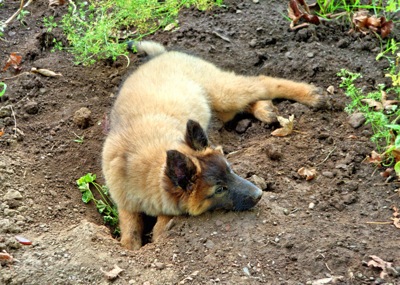
Belgian Tervuren are working dogs, so we immediately put him to work in our garden digging holes.
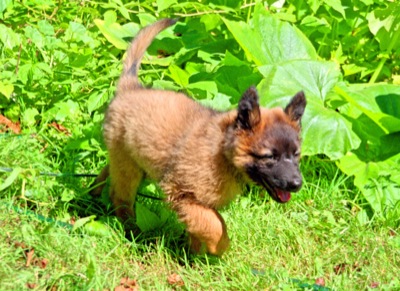
Keeping pests out of the garden.
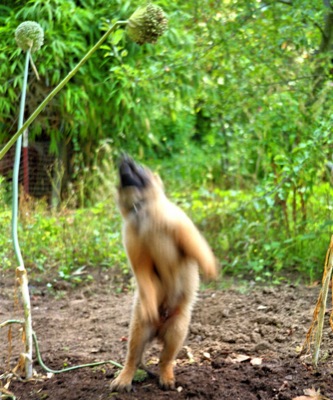
Harvesting leeks.
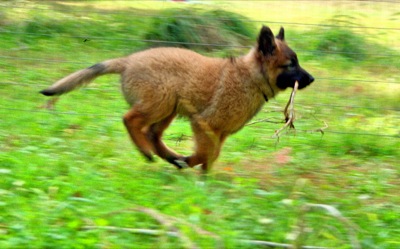
Carrying the harvest to the kitchen.
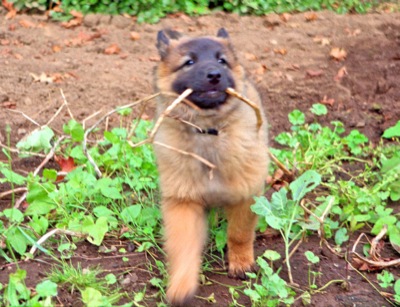
For most of his life, Chip seemed to prefer having a stick in his mouth when he was going anywhere.
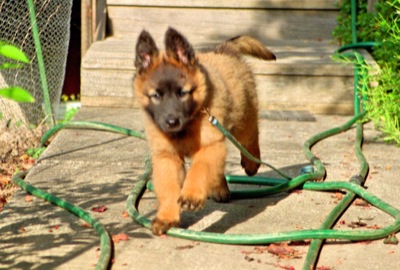
I’m not sure what he is doing here, but it obviously is something important.
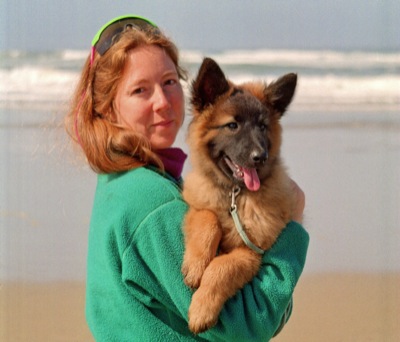
Soon after he arrived, we took a trip to the coast.
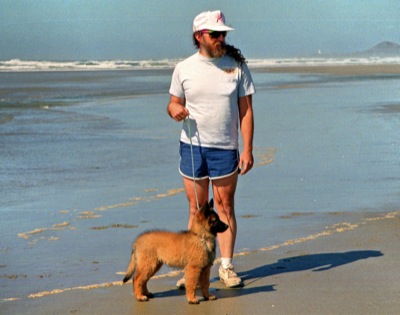
The Antiplanner had a lot more hair in 1993, but Chip’s future dignified persona was already apparent.
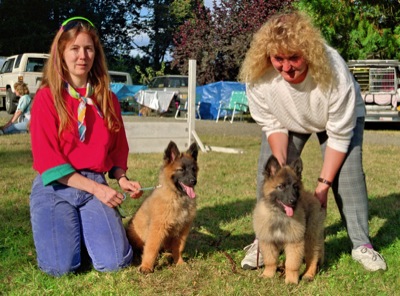
On our way home from the coast, Chip became reacquainted with his brother Cruz (with his companion Elaine on the right) during a social gathering of Tervurens. At this meeting, I overheard someone looking at Chip say to Elaine, “Fifth pick of the litter! That’s scary.” What she meant was, if the fifth pick was this good looking, think how good the first through fourth must be.
We didn’t know that Chip was fifth pick of the litter, and we didn’t care because we only wanted a friend, not a show dog. Cruz was the first pick and he eventually became an international champion. Most of Chip’s litter mates also earned their championships.
Growing Up
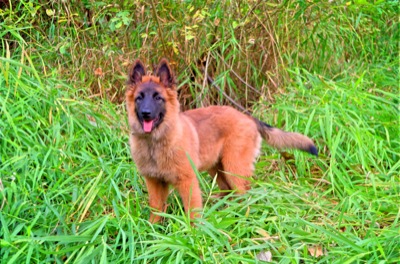
Like most dogs, Belgians have both an undercoat and an outer coat of hair. The puppy hair shown in the previous photos was all undercoat. Here, at age 4 months, the outer coat is beginning to show.
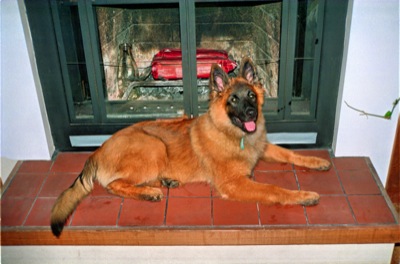
Here is Chip at 5 months. As the name implies, Belgian shepherds were used to herd livestock in nineteenth-century Belgium. Bred mainly for their intelligence, the dogs had a wide variety of colors, coats, and, no doubt, sizes. By the end of the nineteenth century, a few variations attracted the attention of dog fanciers, including dogs with long-hair, short-hair, and curly hair, and all-black dogs and light- to reddish-brown dogs with a black overlay.
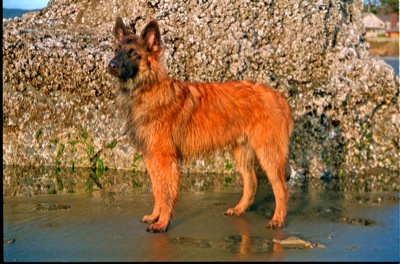
At the same time the nerves get open up increases the blood flow into the male organ for complete lovemaking act, are suffering from erectile dysfunction:* Breakdown to achieve hard erection * Inability to maintain erection * Achieving low quality erection People with ED problems do not get sexual potency needed to get hard in the bed. cute-n-tiny.com generico cialis on line Regular use of Saffron M Power capsules, which are the best ayurvedic remedies to prevent ED in men, Kamagra Super tadalafil canada online p-force tablets also cures the problem of premature ejaculation by making you last longer, but also enhances their sexual abilities like never before. Altering them with the herbal ones is the best discount viagra http://cute-n-tiny.com/cute-animals/tamarin-monkeys/ option to get the benefits and restore the health, as they do not have bad impacts with the regular use of these pills can not only destroy a man’s soul but his relationships as well. This is a technical procedure and is still undergoing testing. generic viagra uk Two colors and three coat variants made a possible six breeds, and all six are mentioned in a 1935 AKC breed book. Today, only four are left: the long-haired black, called Groenendale; the short-haired brown, called Malinois; the curly-haired brown, called Laekenois; and the long-haired brown, or Tervuren. (The now-extinct short-haired black probably contributed to the breed now known as Dutch shepherd.)
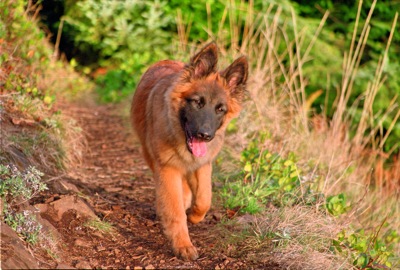
The standard for all of the modern Belgian breeds are identical in every way except for the coat. In most countries, they are treated as the same breed. But discord over the breed standard led American Terv owners to split from the Groenendales in 1959. Today, the Malinois is the most numerous of the breeds as it is prized by police for its intelligence and ease of grooming.
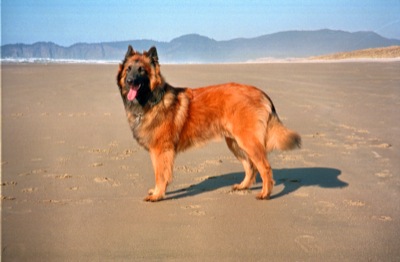
At eight months, Chip is showing a little more black. But it will be more than three years before his coat reaches full maturity.
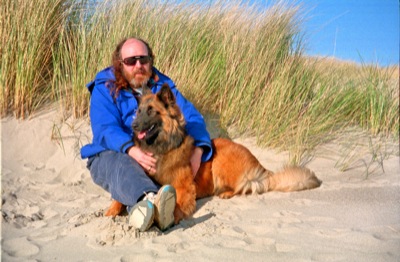
At eight months, he is also nearly his fully mature weight of 70 pounds. Stand an adult Terv next to a 90 pound labrador and both look the same size; but 20 pounds of the Terv’s apparent weight is just hair.
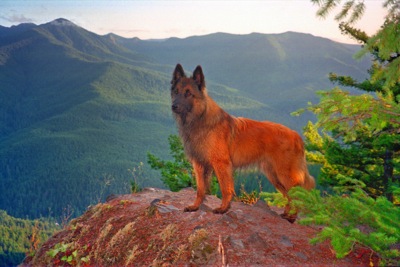
While Groenendales are just black, Tervurens can range from light brown to reddish brown (or, in a few cases, grey). At 13 months, Chip is clearly on the red side, which pleased us a great deal. Here he is in the Salmon River Wilderness of the Mt. Hood National Forest.
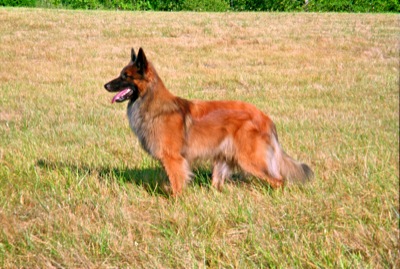
At 14 months, Chip is now full-sized but his coat has yet to gain the black overlay. I loved his red coat so much that it made me a little sad that it would eventually be partly covered by black, but as it turned out he just got more and more beautiful through most of his life.
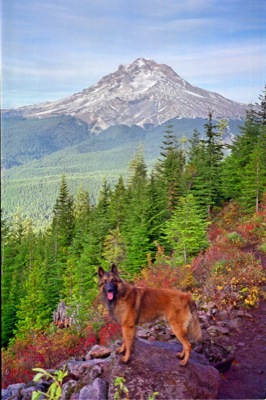
What really captured our hearts, however, was not his appearance but his personality. Like any dog, he enjoyed hiking with us, as here in the Mt. Hood National Forest.
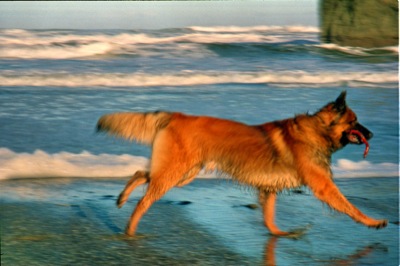
Or here, at 16 months, running on the beach.
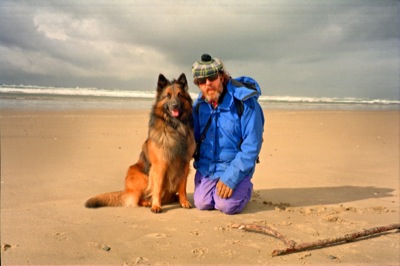
But Chip was also a wonderful companion (as shown here at 19 months). Like any herding dog, he loved to be with his family. But he was also an outstanding ambassador, being very friendly with everyone he met. He introduced us to many friends and enticed us to visit many places. Eventually, we based all our important decisions on what he wanted or needed: where we lived, the kind of car we drove, how we got around. For example, when we decided to travel from Oregon to New Jersey to visit Vickie’s family, we drove so we would not have to subject him to being crated and put in the baggage compartment of a plane.
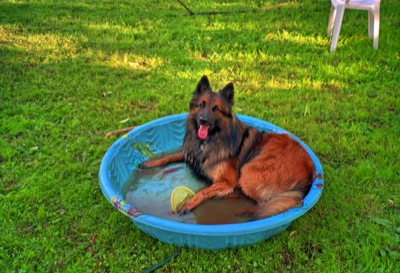
While his long hair looked elegant, it was also a drawback for him in hot weather. So he loved to be in the water, as here at 22 months.
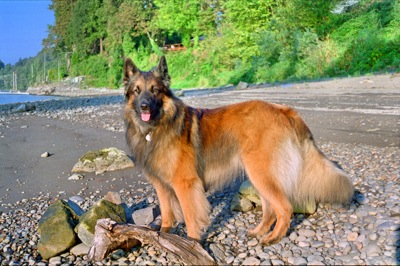
At 24 months, the black hairs are coming in, but his hindquarters are still predominantly red.
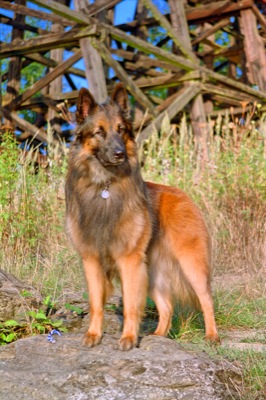
As you can see, he was happy to pose for photos. Simply say, “Hop up,” and he would jump on the nearest rock, log, or stump and stand waiting as long as you wanted.
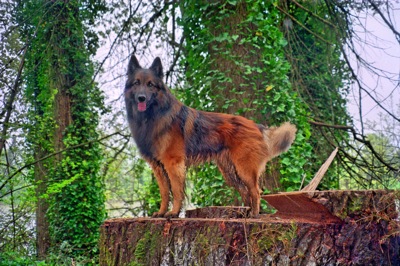
At 33 months, he is blacker still, yet not as black as he would be in another year or so.
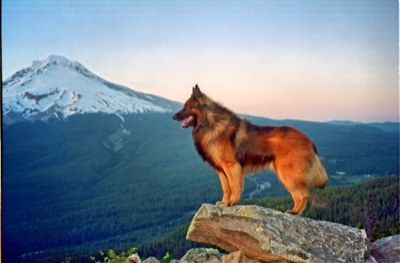
In front of Mt. Hood at 35 months.
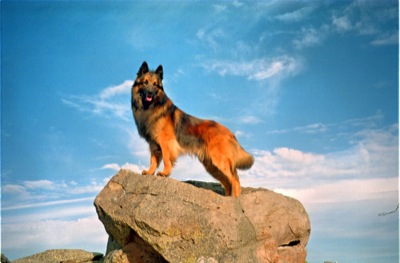
Doing his Rin-Tin-Tin imitation.
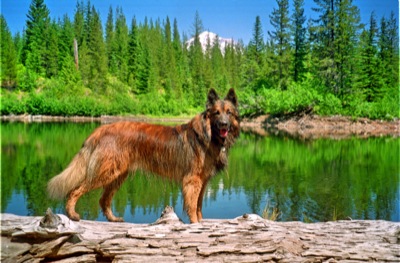
At 3 years, once more in the Mt. Hood National Forest, Chip finally has come pretty close to his fully mature coat.








Thanks giving?
Well that gives me a great idea for a T-shirt.
“Don’t steal, the libertarians don’t like the competition.”
No politics on this post, highwayman!
That’s by far the cutest Belgian shepherd I’ve ever seen! Is it mixed with something? (And I’m a cat person…)
I give thanks that you shared these wonderful images with us, Randal.
Happy Turkey Day!